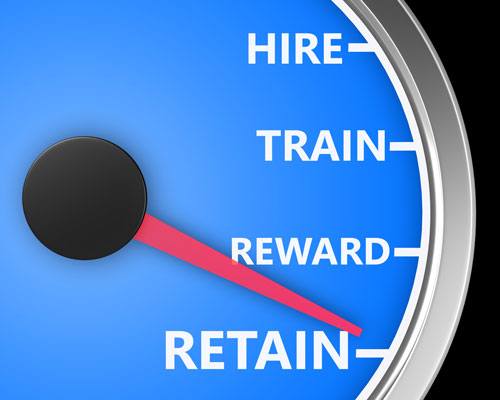Whether you work for a large corporation or for a small business, answer the following questions. Is there enough time during the day to properly train your staff? Is there a formal training plan in place for new and current employees? If you answered yes, you are in better shape than many of your peers.
 Hard Skills
Hard SkillsA successful business typically invests time on the front end. The saying goes, “Slow to hire, fast to fire.” Take your time hiring your employees as they are one of your greatest assets. Invest time to explore different hiring aptitude and personality tests because you can train skills that can be taught and learned as opposed to personality traits that are innate. You can train a skill set such as lensometry, fabrication of eyewear, contact lens dispensing, frame fitting and dispensing. Those skills sets can be evaluated by measuring and/or observation. You can develop a training program of skill sets that can be evaluated objectively.
Soft Skills
A personality is part of who the person is from within. An office manager in an office that is highly organized may be unsuccessful in attempting to train an employee to be organized and conscientious when it is not in their nature. This is why it is important to have a list of the attributes someone needs to be successful in your office. When interviewing, have questions or scenarios ready to see if the candidate aligns with your needs.
SWOT to Start
Determine the type of training needed for you to get through your day-to-day operation. For example let’s say it is to reduce remakes. You want to start with a SWOT analysis of your current employees (SWOT stands for strengths, weaknesses, opportunities and threats.) The data you collect will help improve your decision making process, allowing you to match employees with a training plan.
When to fit it in?
Are the training sessions going to be held before or after the normal business hours? If so, how might you adjust the schedule or do you pay overtime? Determining what works best for your office is part of how you develop your training plan. Conducting uninterrupted training may be necessary for certain topics. Some offices have an extended lunch break for a “lunch and learn” which does not interfere with employee hours and avoids interruptions by phone and unpredictable patient traffic.
Goals
What are your goals? Good business practice is to set goals and create a way to measure the results. Once you conduct a training session, be sure to apply the training right away. You want to provide opportunities for your staff to use what they learn. Follow through, check in with your staff, especially the new ones. This allows you to know where exactly they need extra work. The final key to a strong training program is to provide continuous coaching, evaluation, and feedback.
Continuous Education
Encourage learning outside of the office. Some states have opticianry programs where employees can earn an Associate’s degree in opticianry. Also encourage your staff to take and maintain their ABO and NCLE certifications as the preparation process and the continuing education requirement will develop and maintain a skill set that is rapidly changing in the optical world. Lastly, investment in a mini-library at the office may be worthwhile. Include current trade journals and magazines, certification review books and appropriate textbooks. When there is an investment in your employees, they notice, and you will achieve your professional goals.













